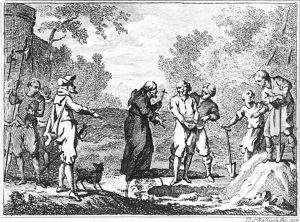Mathias de Sallieth Paintings
Mathias de Sallieth was a notable figure in the world of 18th-century European art, particularly renowned for his work as an engraver. Born in 1749, his contributions to art were significantly influenced by the cultural and political milieu of his era, reflecting the aesthetic shifts and intellectual currents of the Enlightenment period. De Sallieth's works are characterized by their intricate detail and the finesse with which he handled various engraving techniques, making him a respected name among his contemporaries and art historians alike.
Not much is widely known about his personal life or early training, which is common for many artists of the time. However, his surviving works suggest that he was well-versed in the popular styles and subjects of his time, including portraits, landscapes, and historical scenes. De Sallieth's engravings not only served as valuable contributions to the visual arts but also played a role in the dissemination of contemporary ideas and aesthetics across Europe. His ability to capture the nuance of a scene or the likeness of an individual with his engraving tools positioned him as a sought-after artist for commissions by the elite and for illustrating books and periodicals.
Despite his contributions, De Sallieth's career was relatively short-lived; he died in 1791 at the age of 42. The late 18th century was a period of significant upheaval and change, marked by revolutions in America and France, and shifts in the political landscape of Europe. These events, directly and indirectly, impacted artists and the artistic output of the period. De Sallieth's work remains a valuable window into the visual culture of his time, showcasing the technical skill, aesthetic sensibilities, and the thematic diversity of late 18th-century European engraving.
Today, Mathias de Sallieth's engravings are held in various art collections worldwide, appreciated for their historical value and artistic merit. His legacy, though perhaps not as widely recognized as that of some of his contemporaries, underscores the importance of engraving as a form of artistic expression during the Enlightenment. Through his work, de Sallieth contributed to the rich tapestry of European art history, offering insights into the complexities of his time through the lens of visual culture.
